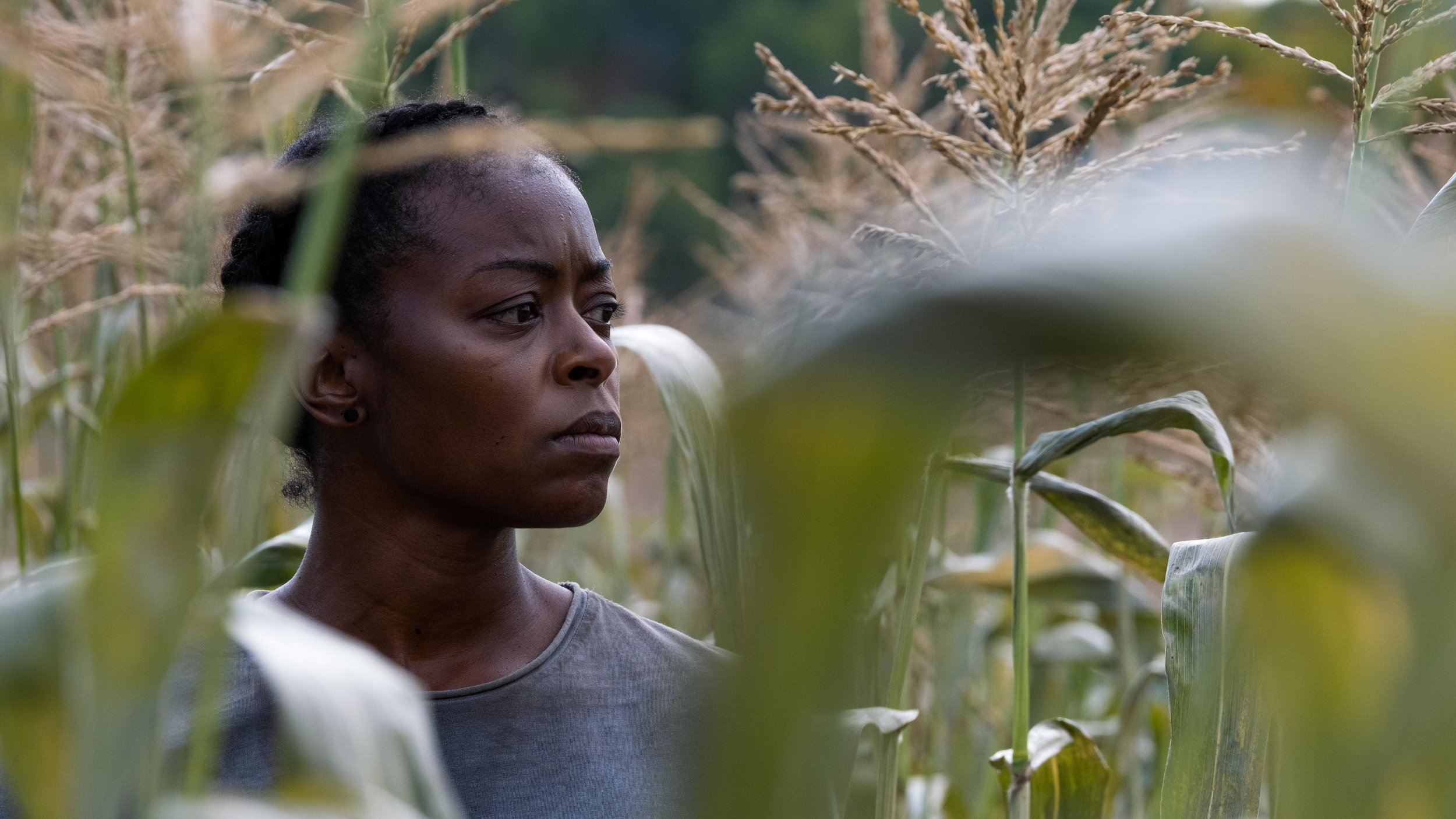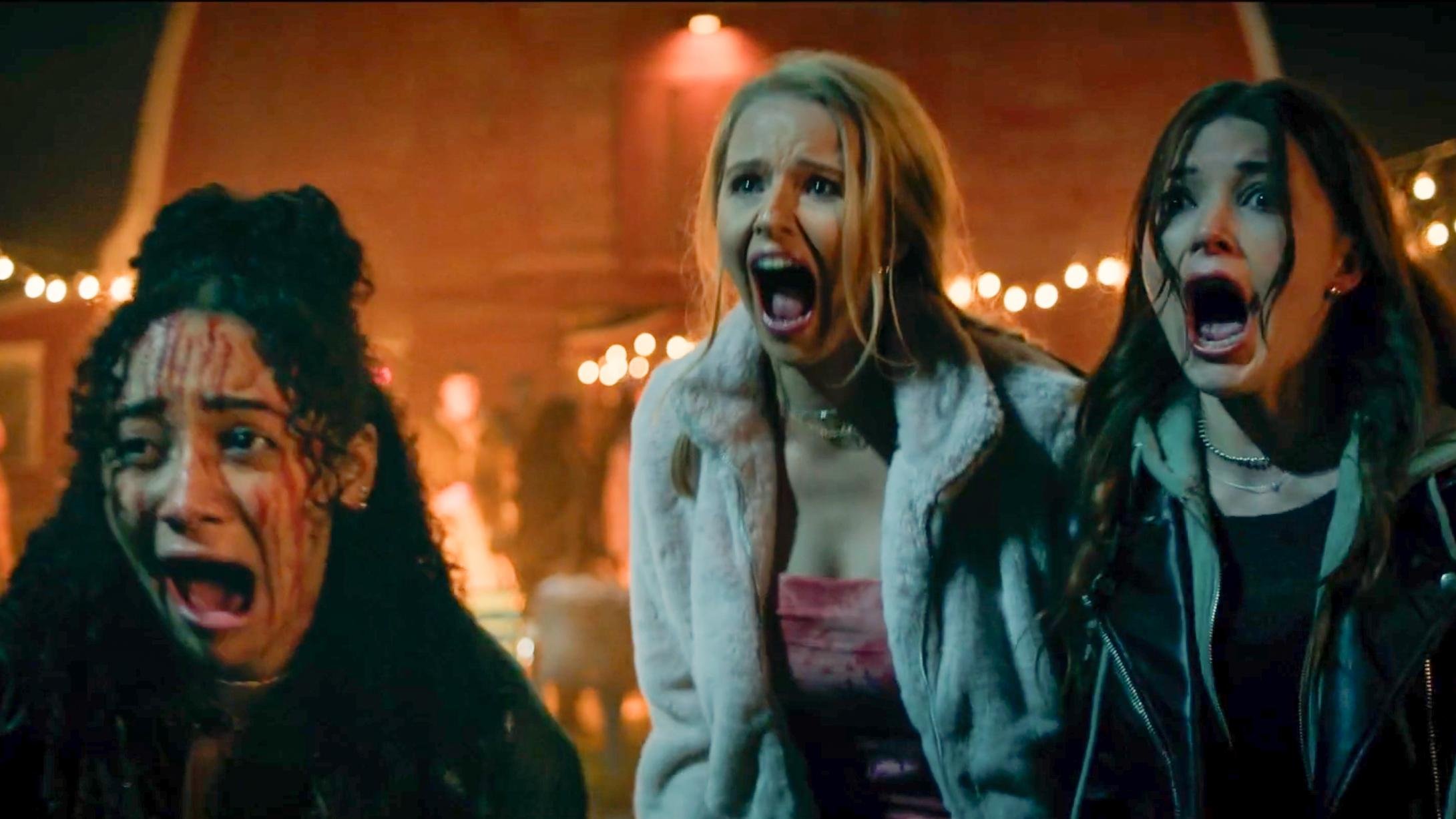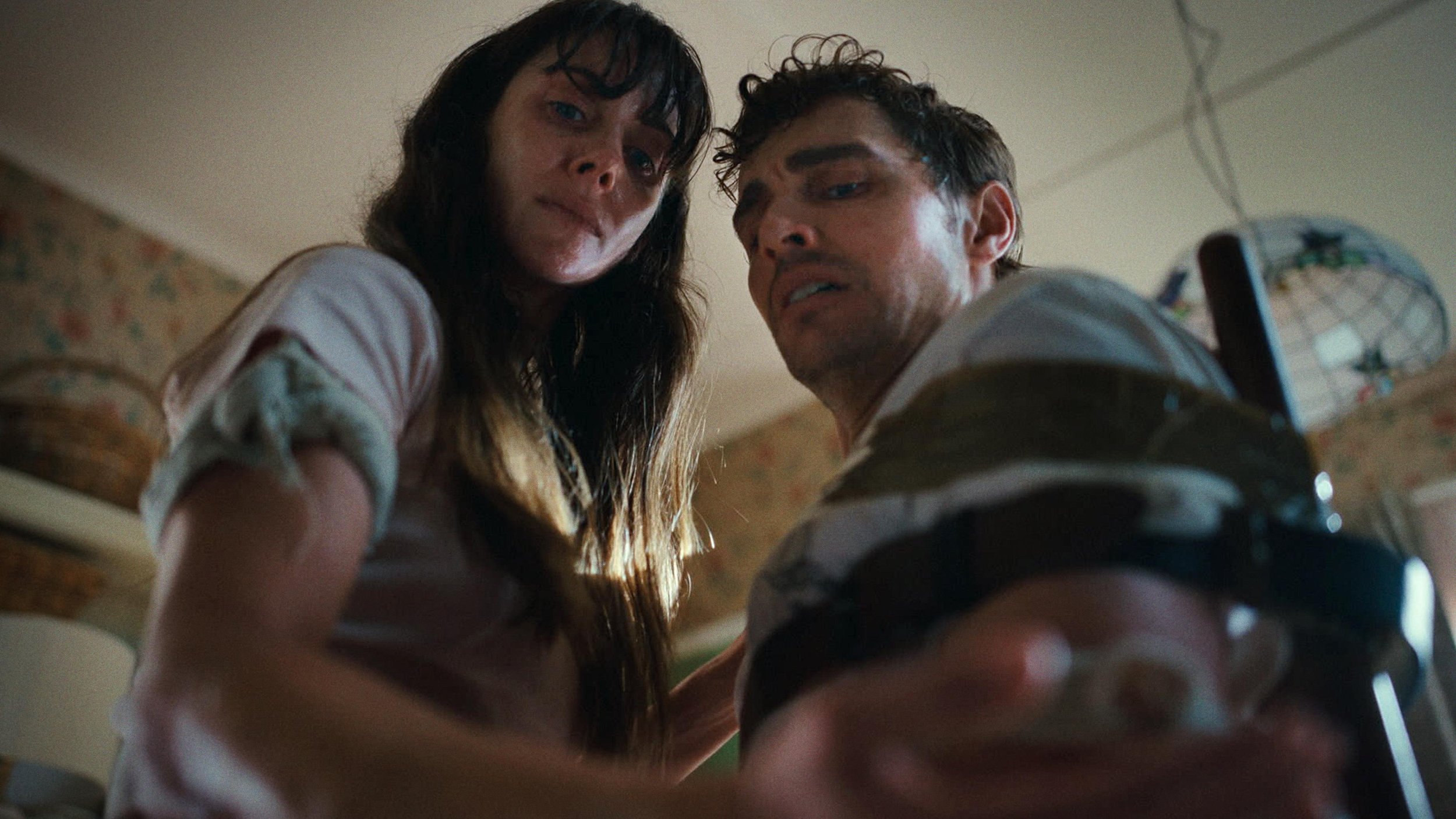
Best of SXSW: Horror/Thrillers
March 27th, 2025 / Kevin Ward
This year’s SXSW lineup was stacked with spine-tingling, nerve-wracking, and downright unforgettable entries in the horror and thriller space. From high-concept nightmares to grounded psychological slow burns, the festival delivered big for genre fans.
A few of our top picks earned spots in our Overall Favorites roundup—Redux Redux, Clown in a Cornfield, We Bury the Dead, and 40 Acres were all must-see standouts. If you haven’t already, check out our Overall Favorites here.
We also couldn’t ignore Good Boy, which snuck up on us in all the best ways to earn a place on our Surprises of SXSW list. Definitely one to seek out.
But beyond those heavy-hitters, there were a few more we couldn’t stop thinking about—films that twisted the genre in unexpected directions or delivered scares with style and smarts. Below, we highlight a few more horror and thriller titles from SXSW 2025 that deserve your attention.
Hallow Road
Hallow Road begins with a ring—a phone call that propels its protagonists, and its audience, into a sharply calibrated descent. That sound becomes both metronome and metatext in Babak Anvari’s rigorously contained thriller, a film whose limitations—one car, two actors, a disembodied voice—become the crucible in which dread is distilled. What emerges isn’t just a stripped-down suspense exercise, but a work that pokes at the psychic undercurrents of parenthood and the stories we tell to make sense of the inexplicable.
Rosamund Pike and Matthew Rhys play a couple in crisis, summoned by their daughter’s voice—Megan McDonnell, heard but never seen—after she’s been in a car crash on a remote stretch of the titular Hallow Road. They drive toward her, but also into a thickening haze of uncertainty and dread. Aside from McDonnell’s performance, filtered through speakerphone static and muffled signal, this is a two-hander in the purest sense: Pike and Rhys shoulder the film’s tonal and emotional burden, navigating frayed nerves and flickers of intimacy with a calibrated precision that taps into something primal: the visceral fear of losing a child. Their performances are not just emotionally acute—they channel the kind of silent, breathless terror that lives beneath the surface of every parent.
Anvari has said he was drawn to Will Gillies’ screenplay because of its economy and emotional intensity. The film gestures toward Celtic myth—malevolent forests, disappearing children, and other mythic lore—but it does so with admirable restraint. The supernatural remains ambiguous, a spectral suggestion rather than a narrative obligation. In this way, it’s more evocative than explanatory.
Visually, the film isn’t doing backflips—most of it is lit dashboard-glow and roadside void—but that limitation becomes an asset. The focus remains firmly on character, voice, and the eerie slow-drip of information. Director Babak Anvariuses the contained setting to express the characters’ subjective experience, with mood and atmosphere doing the heavy lifting. The score—by Lorne Balfe and Peter Adams, and apparently based on a Depeche Mode song—evokes a haunting tone, both thematically and emotionally in sync with the story, without ever overwhelming the scene.
What Anvari has crafted isn’t simply a thriller, but a chamber piece in motion, a parent’s primal scream refracted through folklore and fear. It’s not flashy, but i is a tight, sinewy ride that drifts in like a fog—unshakable, unsettling, and strangely beautiful.
Credits: Directed by Babak Anvari. Written by William Gillies Starring Rosamund Pike, Matthew Rhys, Megan McDonnell. Produced by Two & Two Pictures. US Release Date: TBD — XYZ Films
Together
Together is a delightfully grotesque midnight treat that delivers on all fronts: laughs, shrieks, and stomach-churning body horror. Directed with gleeful abandon and anchored by the real-life chemistry of Alison Brie and Dave Franco, the film turns the most mundane relationship hurdle—commitment—into a full-blown Cronenbergian nightmare.
The premise could be mistaken for a Sundance-friendly dramedy: Millie lands a teaching position in a remote town, and she and Tim (Franco) decamp from the city, leaving behind not just a circle of friends but the urban scaffolding that once defined their identities. It's a test of love, but also of selfhood, as the couple shifts from being distinct individuals to a symbiotic unit—a recalibration that begins as domestic compromise and escalates into existential collapse. Tim, a musician who once dreamed of touring, finds his aspirations quietly amputated by the move, while Millie’s newfound career becomes the centrifugal force around which their lives now orbit. Into this fraught dynamic steps a supernatural presence that doesn’t so much haunt them as enfold them, accelerating their emotional enmeshment into grotesque physical fusion. In this context, co-dependency isn’t a red flag—it’s body horror. The film stages this as both satire and sincerity: a portrait of romantic surrender in which the surrender is total, terrifying, and possibly irreversible.
If the film turns relationship drama into a kind of horror movie, then Alison Brie is the one holding it all together. While Dave Franco's Tim serves as the film’s primary point of view, it’s Brie's performance that shines brightest. Her effervescent charm always jumps off the screen, but it’s the way she subtly threads Millie’s co-dependence through that charm that deepens the film’s emotional impact. As Tim grapples with the loss of his old life and unravels in the face of identity loss, it’s Millie’s steadfast devotion—and occasional overreach—that throws his struggle into sharper relief. Their real-life chemistry gives their dynamic an easy intimacy, but Brie brings a complicated warmth that grounds the horror in something painfully human.
The film’s special effects team understands that horror is as much about viscosity as violence. Sticky membranes and mild discomforts morph into full on bodily betrayal. What might be dismissed in lesser hands as camp or schlock is here rendered with a queasy sincerity, a tactile specificity that insists on being taken seriously even as it triggers giddy revulsion. The film’s body horror "set-pieces" are calibrated with a grotesque precision. Franco’s shower sequence, Brie’s contortionist walk, and the couple's bathroom stall hookup...some things are just destined to never leave your memory.
Premiering at Sundance, Together found in NEON an apt distributor: a company fluent in genre with a pedigree for midnight madness. The film's August 1, 2025 release positions it as a counterprogramming oddity—one that rewards a live audience. Seen alone, it’s unnerving. Seen in a crowd, it becomes something closer to ritual: a shared descent into squirmy exhilaration, anchored by a couple who stick together even when their flesh begins to merge.
Credits: Directed by Michael Shanks. Screenplay by Michael Shanks. Starring Dave Franco, Alison Brie. Produced by PictureStart. US Release Date: August 1, 2025 (Neon)
Credit: Courtesy of NEON
Drop
Drop works from a simple conceit—one that’s likely familiar from the (overplayed) trailers. A woman named Violet (Meghann Fahy) arrives at a posh restaurant to finally meet Henry (Brandon Sklenar), a man she’s only known through text exchanges. There’s a tentative optimism to the occasion, but the mood turns almost immediately. Violet’s phone begins vibrating with anonymous messages—"drops"—delivering a chilling ultimatum: follow instructions to the letter or her son will suffer. No warning anyone—not Henry, not the staff, not the police. The dinner date becomes a trap, and the walls begin to close in.
As Violet tries to suss out who might be behind the escalating coercion, the film leans into its mystery-thriller DNA. Fahy portrays Violet as a resilient foil to her virtual hostage taker—clever, observant, and deductive. She projects a grounded strength shaped in part by glimpses of a past abusive relationship, suggesting a learned vigilance that gives her character a sharper edge. Opposite her, Sklenar brings charismatic charm to Henry, striking up an easy chemistry with Fahy while keeping just enough tension in his performance to make viewers question his sincerity. Is he as genuine as he seems, or is his warmth a mask? The film leaves just enough ambiguity to keep that question alive.
It’s a high-concept pressure cooker, and director Christopher Landon keeps things admirably controlled. The film unfolds almost entirely within the spatial confines of a single restaurant floor plan, yet it doesn’t feel claustrophobic so much as calibrated. Visual language does the heavy lifting: Landon deploys overheads, long takes, and lateral camera glides with purpose, elevating the material beyond its modest means. The on-screen text design isn’t revolutionary, but it avoids the stale convention of static phone close-ups by being dynamic and cinematically embedded within the frame—never flashy, but always visually motivated and thoughtfully placed.
The production design isn’t just there for atmosphere—it actively supports the storytelling. The filmmakers reportedly built a functioning restaurant with real staff, and that attention to detail hums beneath the surface. The result is a setting that doesn’t just suggest authenticity but dazzles with it. The restaurant looks gorgeous on screen—sleek, inviting, and entirely convincing as a real place. It’s a perfect visual match for Fahy’s striking red dress.
If there's a limitation, it's in the film's roster of peripheral players. The potential for red herrings and false leads is present but underexplored; a few more narrative feints might have deepened the intrigue. And while the trailers hinted at something a bit hokey, the final product is surprisingly assured. The execution is sharp, the pacing tight, and Fahy is terrific—commanding the screen with a blend of quiet calculation and emotional volatility. Drop doesn’t overstay its welcome or oversell its premise. It’s a sleek, efficient machine designed to unnerve and entertain—and it does both with confidence. A one-and-done experience, perhaps, but a worthwhile one.
Credits: Directed by Christopher Landon. written by Jillian Jacobs and Christopher Roach. starring Meghann Fahy, Brandon Sklenar. Produced by Blumhouse Productions. US Release date: April 11, 2025 (Universal)
Credit: Bernard Walsh/Universal Pictures







